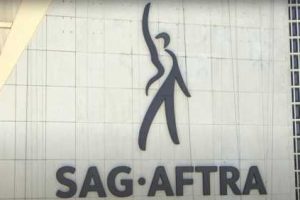SAG-AFTRA Sees $14 Million Dues Shortfall But Remains Financially Sound, Latest Financial Report Shows

EXCLUSIVE: Union dues paid by SAG-AFTRA members were down $14 million over the past year of the pandemic but were significantly higher than union leaders expected, according to the union’s latest financial report obtained by Deadline.
The report for the fiscal year ended April 30 shows that despite so many job losses for its members – and several rounds of dues relief offered to financially strapped performers – they kept right on paying their dues. It also notes that the 165,000-member union had expected that 23% of all dues owed would be “uncollectable” over the past year of the pandemic, but it turns out that only 6% of the dues owed couldn’t be collected.
Dues, which are every union’s largest source of income, were down dramatically at nearly every entertainment union and local across the country last year, with some unions seeing their dues intake slashed by more than half.
In the year before the pandemic, SAG-AFTRA members paid more than $106.7 million in dues, according to a report filed last year with the U.S. Department of Labor. This past year, dues income fell 13% to just over $92.7 million. Even so, that’s nearly $17 million more than the $76 million in dues collections that the union budgeted.
Watch on Deadline
Overall, the union is coming out of the pandemic in good financial shape, according to its latest FY21 Actuals Report – a comparison between what was budgeted and the union’s actual income and expenses for the fiscal year. It was prepared by the union’s Finance Committee in advance of Saturday’s national board meeting.
Marked “confidential,” the report was obtained by Deadline.
Total revenue of $117 million was $25.8 million higher than budgeted, while total expenses were $4 million less than the $96.3 million budgeted, according to the report. And twice as many new members joined the union during the pandemic than had been expected. “New joins averaged 394 per month, which was more than the budget of 178 per month,” the report says.
Initiation fees collected were also more than double what had been projected. This past year, the union collected nearly $12.3 million in initiation, reinstatement and application fees – which is nearly $6.4 million more than the $5.9 million that had been budgeted. Initiation fees range from $300-$3,000; regular dues are $218.60 and 1.575% of earnings up to a maximum of $7,875 a year.
The union’s total assets of $489 million – including $107 million in cash and $26 million in investments – were up $86.8 million from the previous year, while total liabilities of $386.7 million were up $61.2 million.
Listed as both assets and liabilities are more than $237 million in “funds held on behalf of others,” including $56 million in unclaimed residuals for performers or their heirs that the union can’t locate; $20 million in performers’ settlements; $12 million in performers’ foreign royalties; $98 million in producers’ production deposits; and $51 million in producers’ residuals deposits.
Payroll and related expenses came in at $55.4 million – half a million dollars under budget. “Actual expenses were favorable to budget due to timing of filling open positions,” the report notes.
Some costs of running the union were higher because of Covid-19. Professional and legal expenses, for instance, came in at just over $7 million, which was $1.8 million more than budgeted “due to Covid-19 related specialists, Covid-19 related testing for set visits, and fiscal year legal activity,” the report notes.
But the pandemic also came with some financial benefits for the union, including a “forgivable” $10 million loan from the federal government through the Paycheck Protection Program, which to date has forgiven nearly $400 billion in Covid-related PPP loans to more than 4 million businesses and organizations nationwide.
And travel and meeting expenses were only $177,730 over the past year, which due to Covid-19 restrictions was less than 6% of $3 million budgeted.
Working remotely has also substantially reduced the union’s costs in many areas of its operations. The report mentions Zoom more than 20 times in its 25 pages.
Negotiations and meetings regarding the union’s more than two dozen different contracts came in at more than $1 million under budget. Total negotiation expenses were only $313,617 for the year, compared to the $1.36 million that had been planned for.
The union had budgeted $900,000 for its film and TV contract negotiations last year, but only spent $271,235 – a savings of $628,765 because the negotiations were held via Zoom. The contract was approved in July 2020.
SAG-AFTRA also budgeted $150,000 for its News & Broadcast negotiations, but only spent $471 because the talks were held on Zoom.
Another $100,000 was budgeted for its TV animation negotiations, but only $6,911 was spent because those talks were also held on Zoom. That contract was approved last September.
Three meetings of the union’s national board – all held on Zoom – only cost $2,242 instead of the $455,000 that had been budgeted – a savings of $452,758. Nine meetings of the executive committee – all held on Zoom – came in at no expense and $9,000 under budget.
This year’s SAG Awards, a one-hour pre-taped show that aired in April on TNT, had gross revenues for the union of $3.6 million and gross expenses of $2.3 million, resulting in a net income of $1.3 million.
The report also notes that Los Angeles remains far and away the union’s largest local, accounting for 50.3% of its active members, followed by New York with 22.5% and the Washington-Mid Atlantic Local with 3%. None of its other 22 locals has more than 3% of the union’s active members. Even in Atlanta, where production is booming, the SAG-AFTRA Local there has only 1.8% of the union’s active members.
Read More About:
Source: Read Full Article

